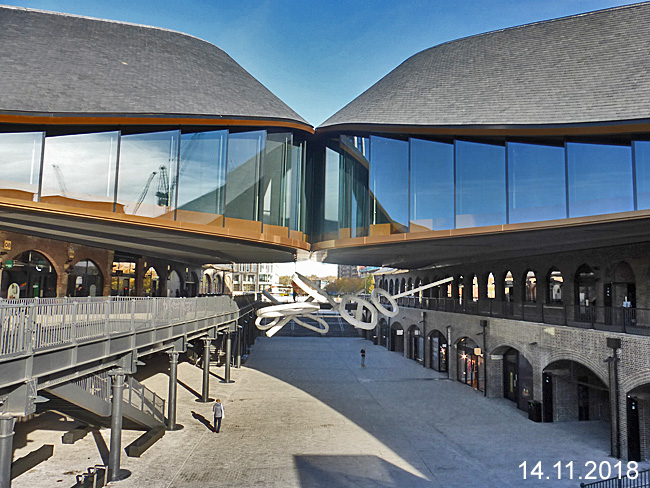| Architect |
Thomas
Heatherwick |
| Date
Built |
2019 |
| Location |
King's Cross |
| Description |
|
Coal
Drops Yard is one element of the redeveloped
railway land behind King's Cross Railway
Station. The yard's website gives an
insight into the area's commercial
history. "Until the early
1800s, goods were mainly transported to
London by sea and inland waterways. The
task was a slow and often perilous one.
The coming of the railways changed
everything – by canal, the journey to
London from the north took weeks, by
rail, mere hours. King’s Cross
became the hub for anything and
everything – potatoes, furniture,
tobacco, timber, whale carcasses!
Whatever London required, it arrived at
King’s Cross. The most vital of
these goods was coal. Victorian London
was a city powered by coal, and Coal
Drops Yard was its coal store. The
drops were long, covered structures
built in three storeys. The trains
entered under a vast curved roof on the
upper level, the coal dropped from
bottom-opening wagons through a hole in
the middle level where it was sorted and
graded before being shoveled into sacks
at yard level for transport on by horse
and cart." Heatherwick's website explains how they have transformed this historic but neglected facility. ".....the studio has restored and transformed a pair of long Victorian warehouses with attached train viaducts to create a new public space and retail destination. Built in 1850 to receive coal for London as it arrived by rail from the North of England, the two-storey brick and cast iron structures were later adapted for light industry, storage and nightclubs until they fell into disuse by the late 1990s. The studio’s design opens up the area to the public, linking the long viaducts and the yard between them to create a space for people to enjoy. Rather than making a box element colliding with the geometry of the existing roofs, the gabled roof of each building rises up and stretches towards the other, meeting to form a new upper storey that gives the project a central focus."            |
|
|
Coal
Drops Yard, London
 |
